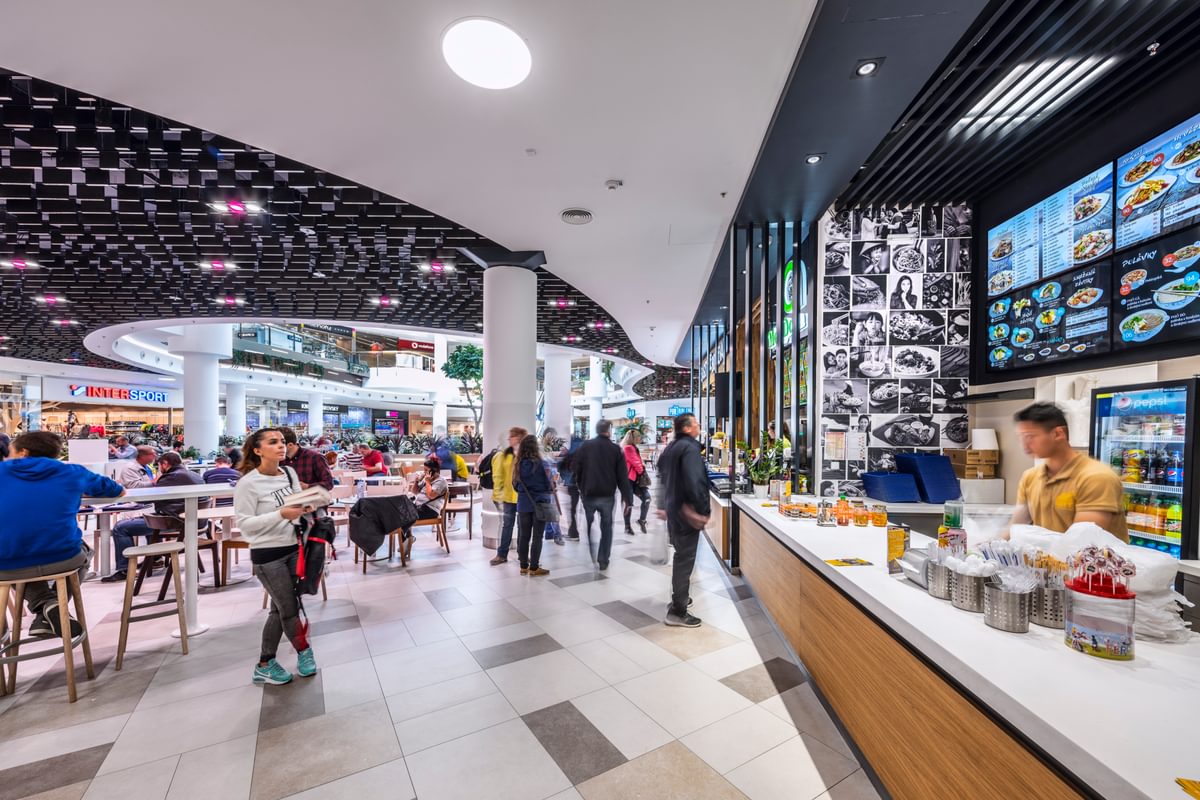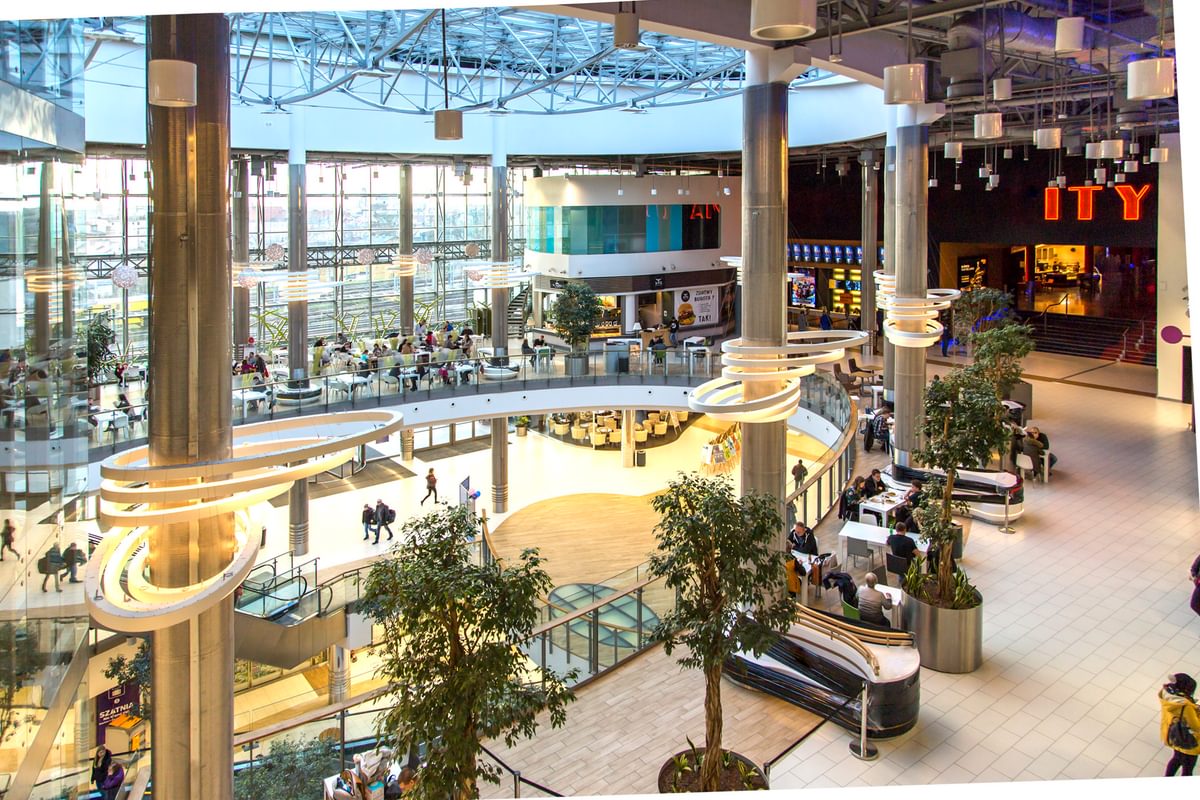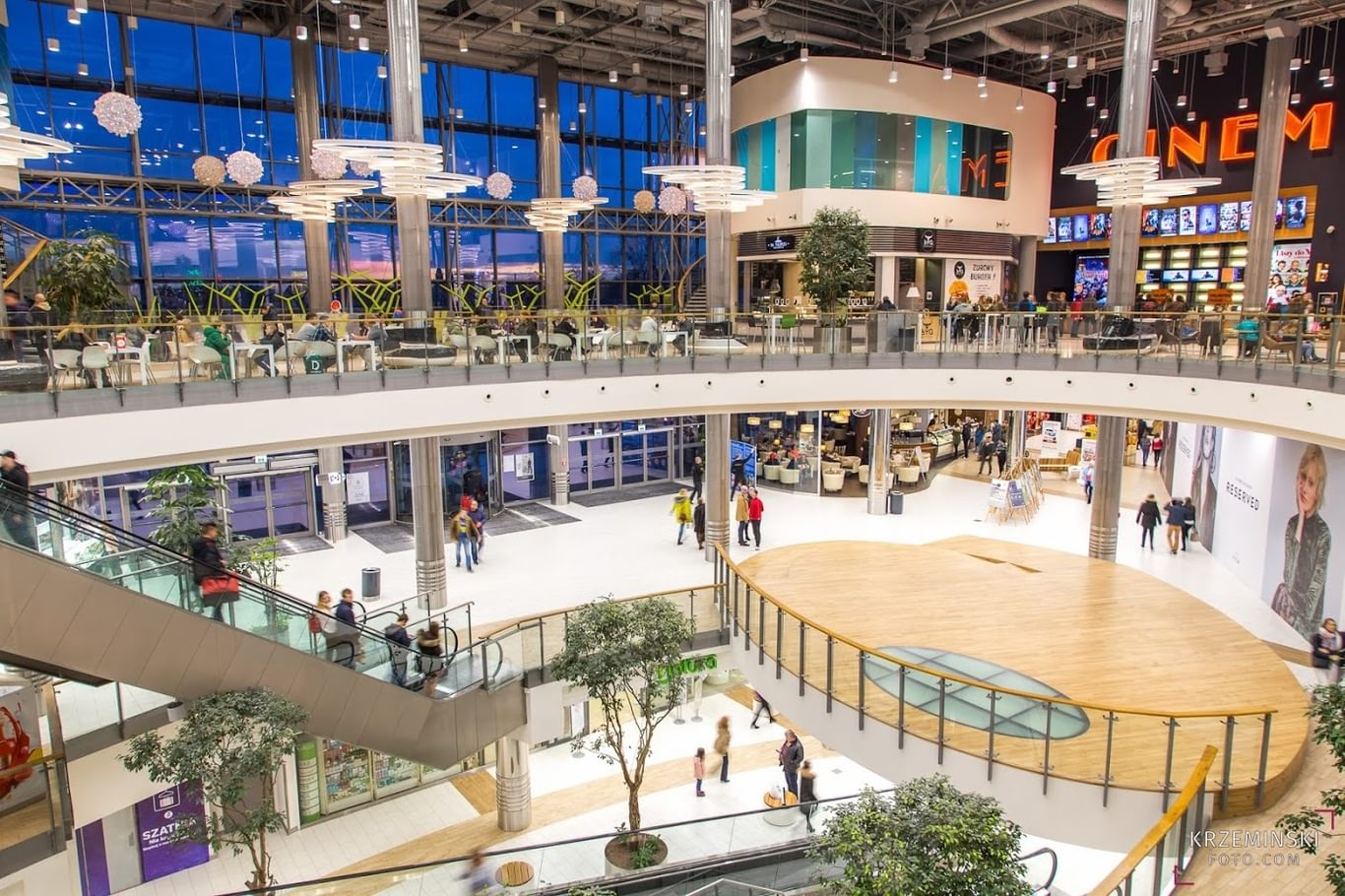
Retail refurbishments in Central and Eastern Europe – responding to the transformation of retail and evolving customer expectations
Shopping centres have been facing a growing number of challenges in the last few years, with many retailers failing to adapt quickly enough to competition from online retail platforms and customer habits changing to reflect new priorities and expectations. Chapman Taylor Group Board Director Jon Hale and Prague Studio Director Filip Pokorny examine how our shopping centres must adapt so that they can flourish in the coming years.
Shopping centres have been facing a growing number of challenges in the last few years, with many retailers failing to adapt quickly enough to competition from online retail platforms and customer habits changing to reflect new priorities and expectations. Chapman Taylor Group Board Director Jon Hale and Prague Studio Director Filip Pokorny examine how our shopping centres must adapt so that they can flourish in the coming years.
The need for action
The COVID-19 pandemic has brought the long-term problems facing shopping centres into sharper focus than ever before – retailers are closing or entering administration in worrying numbers, the leisure and hospitality industries are struggling and the viability of many shopping centres is uncertain.
Although the pandemic will not go on forever, it could continue long enough to cause lasting damage to many shopping centres, even forcing them to close permanently. The pandemic will also likely lead to lasting changes in habits, as people become used to growing online options. Even if the crisis ends soon, it is essential that shopping centre owners address the ongoing challenge of incorporating online platforms into the physical environment.
How should shopping centre owners and retailers respond?
Owners and retailers need to use space more efficiently, improve their online presence and think strategically about how to blend their virtual offer with their physical presence. Many shopping centres in the CEE region were constructed in the 2000s with a long-term goal of extending, but this model may not represent the best approach as the nature of retail changes.
Shopping centres must focus on maximising convenience and comfort to compete with the ease of online shopping. This could include more and better-designed amenities (WCs, baby-change, etc.), more relaxation zones and better customer service. Important elements will be easier access (more frequent public transport services, secure cycle facilities, improved parking comfort) and clearer navigation, with better signage, more instinctive wayfinding and less visual clutter. Fast and well-located vertical circulation is important; customers do not respond well to being manipulated into an extended “journey”.
F&B continues to be an important component of the retail-led experience – a good gastronomic offer provides a reason to dwell and recharge, as well as creating a positive buzz. A well-considered food, leisure and entertainment offer will always be a key element for any successful shopping venue.
These were some of the principles behind our refurbishment of the Letňany shopping centre in Prague, where we added a new entrance and remodelled the vertical circulation to improve access and simplify navigation. The extended food court introduced high-quality F&B offers and a relaxing environment based on the concept of extending the adjacent park inside the building. The enlarged public spaces provide places to relax and enhanced the visibility of key units, adding value for the retailers. We “sacrificed” some lettable area to bring long-term social and commercial sustainability to the centre.
Similarly, we transformed Forum Gliwice in Poland, a ten-year-old shopping centre, inside and out, refreshing nearly all public areas. Movement through the centre was improved by changes to the common areas while a stair landing in the atrium was removed to allow the installation of a stage which now hosts events and artistic performances, providing a focal point.
In an age of online retail dominance, some brands are moving to a business model where shops are essentially showrooms, with products delivered from remote locations (so-called “dark shops”, focused on delivery only). Reduced demand for on-site storage will mean that some shopping centre units and ancillary spaces can be smaller and more focused on digital engagement. Conversely, some retailers are reducing front-of-house areas to increase storage capacity, holding larger stock, which can be selected from online or in store and delivered almost immediately.
We are also witnessing a rapidly increasing market share being taken by “e-shops” such as Alza.cz, Eobuwie.pl (EFootwear.eu), Rohlik.cz and others, which are transforming retail in the CEE region. Alza opened e-shops in the Czech Republic and Slovakia in 2000 and now offers localised websites for the UK, Hungarian, Austrian and German markets as well as serving the wider region. As e-shops increase their market share, there is growing demand for physical locations, and shopping centres offer ideal locations for local showrooms, service centres and collection and return points. Shopping centres that engage positively with e-retailers have a better chance of surviving, long term.
Another essential component is to increase reasons to visit by encouraging a community spirit bolstered by a regular programme of entertainment, educational programmes, cultural events and exhibitions, markets, fairs and social events. Engaging with the community will help make the centre an everyday amenity, not just a place to spend money.
How can design help?
Design needs to focus on the customer journey, making customers feel engaged, well-orientated and comfortable. Shopping centre owners often work to tight margins, so the key will be to create strategically located and well-judged “Wow!” areas within tightly defined budgets.
Architecture can facilitate a sense of community by providing the capability to host a range of leisure and entertainment functions, among others. For example, Chapman Taylor designed the reconstruction of the original IGY shopping centre in České Budějovice, which now provides 130 shops, restaurants, cafés, a new nine-screen cinema, a food court and other facilities. The project was welcomed by customers, but the client wanted to further enhance the experience.
Based on detailed observations of how the spaces were used, Chapman Taylor created a package of finely tuned measures to increase visitor comfort and convenience, including soft seating, improved signage and mood lighting. These small changes, delivered within a limited budget, led to an increase in footfall and overall spending.
The more dynamic retail, F&B and social scenes of the future will mean that fit-out lifecycles will likely be shorter, so flexibility will be important, as will an environmentally responsible approach. In addition, shopping centre architecture will need to adapt to the booming “delivery economy”, with functionally efficient delivery infrastructure in place.
While design can address some market challenges, it is also important to evolve the commercial models on which shopping centres traditionally work to provide more flexible and appropriate tenancy options, reflecting the needs of a new breed of retailers and service providers.
Chapman Taylor has an industry-leading record in adding value to existing shopping centres and leisure venues. The designs we create reflect our understanding of what makes a creative, successful and resilient retail scheme.
How should shopping centre owners and retailers respond?
Owners and retailers need to use space more efficiently, improve their online presence and think strategically about how to blend their virtual offer with their physical presence. Many shopping centres in the CEE region were constructed in the 2000s with a long-term goal of extending, but this model may not represent the best approach as the nature of retail changes.
Shopping centres must focus on maximising convenience and comfort to compete with the ease of online shopping. This could include more and better-designed amenities (WCs, baby-change, etc.), more relaxation zones and better customer service. Important elements will be easier access (more frequent public transport services, secure cycle facilities, improved parking comfort) and clearer navigation, with better signage, more instinctive wayfinding and less visual clutter. Fast and well-located vertical circulation is important; customers do not respond well to being manipulated into an extended “journey”.
F&B continues to be an important component of the retail-led experience – a good gastronomic offer provides a reason to dwell and recharge, as well as creating a positive buzz. A well-considered food, leisure and entertainment offer will always be a key element for any successful shopping venue.
These were some of the principles behind our refurbishment of the Letňany shopping centre in Prague, where we added a new entrance and remodelled the vertical circulation to improve access and simplify navigation. The extended food court introduced high-quality F&B offers and a relaxing environment based on the concept of extending the adjacent park inside the building. The enlarged public spaces provide places to relax and enhanced the visibility of key units, adding value for the retailers. We “sacrificed” some lettable area to bring long-term social and commercial sustainability to the centre.
Similarly, we transformed Forum Gliwice in Poland, a ten-year-old shopping centre, inside and out, refreshing nearly all public areas. Movement through the centre was improved by changes to the common areas while a stair landing in the atrium was removed to allow the installation of a stage which now hosts events and artistic performances, providing a focal point.
In an age of online retail dominance, some brands are moving to a business model where shops are essentially showrooms, with products delivered from remote locations (so-called “dark shops”, focused on delivery only). Reduced demand for on-site storage will mean that some shopping centre units and ancillary spaces can be smaller and more focused on digital engagement. Conversely, some retailers are reducing front-of-house areas to increase storage capacity, holding larger stock, which can be selected from online or in store and delivered almost immediately.
We are also witnessing a rapidly increasing market share being taken by “e-shops” such as Alza.cz, Eobuwie.pl (EFootwear.eu), Rohlik.cz and others, which are transforming retail in the CEE region. Alza opened e-shops in the Czech Republic and Slovakia in 2000 and now offers localised websites for the UK, Hungarian, Austrian and German markets as well as serving the wider region. As e-shops increase their market share, there is growing demand for physical locations, and shopping centres offer ideal locations for local showrooms, service centres and collection and return points. Shopping centres that engage positively with e-retailers have a better chance of surviving, long term.
Another essential component is to increase reasons to visit by encouraging a community spirit bolstered by a regular programme of entertainment, educational programmes, cultural events and exhibitions, markets, fairs and social events. Engaging with the community will help make the centre an everyday amenity, not just a place to spend money.
How can design help?
Design needs to focus on the customer journey, making customers feel engaged, well-orientated and comfortable. Shopping centre owners often work to tight margins, so the key will be to create strategically located and well-judged “Wow!” areas within tightly defined budgets.
Architecture can facilitate a sense of community by providing the capability to host a range of leisure and entertainment functions, among others. For example, Chapman Taylor designed the reconstruction of the original IGY shopping centre in České Budějovice, which now provides 130 shops, restaurants, cafés, a new nine-screen cinema, a food court and other facilities. The project was welcomed by customers, but the client wanted to further enhance the experience.
Based on detailed observations of how the spaces were used, Chapman Taylor created a package of finely tuned measures to increase visitor comfort and convenience, including soft seating, improved signage and mood lighting. These small changes, delivered within a limited budget, led to an increase in footfall and overall spending.
The more dynamic retail, F&B and social scenes of the future will mean that fit-out lifecycles will likely be shorter, so flexibility will be important, as will an environmentally responsible approach. In addition, shopping centre architecture will need to adapt to the booming “delivery economy”, with functionally efficient delivery infrastructure in place.
While design can address some market challenges, it is also important to evolve the commercial models on which shopping centres traditionally work to provide more flexible and appropriate tenancy options, reflecting the needs of a new breed of retailers and service providers.
Chapman Taylor has an industry-leading record in adding value to existing shopping centres and leisure venues. The designs we create reflect our understanding of what makes a creative, successful and resilient retail scheme.
How can design help?
Within this rapidly evolving retail environment, shopping centres have to be highly adaptable and respond quickly to accommodate new concepts being developed by retailers and the increasingly sophisticated demands of customers. Designers need to focus on creating an attractive and engaging customer journey, ensuring high levels of convenience, safety and comfort within which to explore the emerging retail formats, to try the new culinary offers, enjoy the exciting leisure opportunities and make use of the new services being offered. Given the challenging commercial environment, designers will inevitably have to work within limited budgets while still including some of those all-important, strategically located and well-judged “Wow!” moments.
Architects can help support the sense of community by designing suitable and flexible spaces to host many different cultural and entertainment functions and by creating a truly welcoming environment. When Chapman Taylor designed the reconstruction of the original IGY shopping centre in České Budějovice, the project was welcomed by retailers and customers for the new extended offer and the attractive environment.
However, after the opening, we noticed some opportunities to enhance the customer experience further, and based on detailed observations of how the spaces were being used, we created a package of finely tuned measures to increase visitor comfort and convenience, including more soft seating, improved signage and additional mood lighting. These small, but cost-effective, changes have led to a measurable increase in footfall, dwell time and overall spending.
A whole-life approach to design
The increasingly dynamic retail, F&B and social scenes will mean that fit-out lifecycles will likely become shorter, so adaptability must be embedded within the concept, as must a committed approach to environmentally responsible design. With the challenging targets set for reaching carbon neutrality within the coming decade, retailers and shopping centre managers are under enormous pressure to transform their business models to ensure an economical and sustainable future. The days of fast-fashion and the throwaway economy are coming to an end and new models, based on reuse, recycling and regeneration, are on the horizon.
Shopping centres that engage fully in the principles of the circular economy and provide the right support for the necessary transitions will survive into the future. There will inevitably be some victims on the way, and it will be another task for architects to help repurpose these buildings and sites with enlightened investors. Bringing residential, office and other uses into existing shopping centre environments can create exciting new mixed-use offers with long-term viability.
While design can address some market challenges, it is also essential that shopping centre owners evolve the commercial models on which the business has traditionally operated to provide highly-flexible and appropriate tenancy options, not just for the new breed of retail entrepreneurs, but also for the well-established industry players, some of whom are fighting for their very existence.
Chapman Taylor has an industry-leading record in adding value to existing shopping centres and leisure venues. The designs we create reflect our understanding of what makes a creative, successful and resilient retail scheme.


